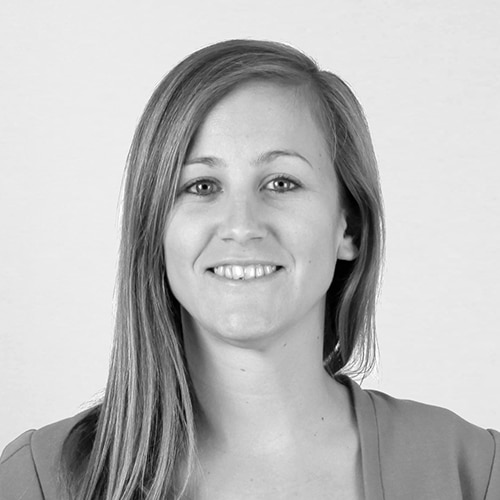Architecture professionals filled the space dedicated to sub-Saharan Africa at Batimat 2015. Among the opportunities presented, Cameroon delegates discussed their long-term development project Cameroon Vision 2035, launched in February 2009. Although development in Cameroon is only now kicking off, there’s much on the agenda.
A Vision for Urban Growth
The objectives behind developing the country are far from opaque: to alleviate poverty, become a middle income and newly industrialized country and consolidate democracy and national unity.
“Large construction projects will create job opportunities,” Louis Max Ayina Ohandja, state secretary of the Ministry of Public Works in Cameroon, opened the first conference of several dedicated to Cameroon on November 4, 2015.
“I’m addressing experts, consultants, researchers, contractors and other professionals, and asking you to pay close attention to the upcoming presentations on major architecture projects.” Throughout the conference, it became apparent that the country will need investors in order to reach their goal.
Their plan calls for more infrastructure and social services, notably in the education and health sectors. The country anticipates a 75% population growth in urban areas, another point supporting the pre-emptive action against uncontrolled expansion.
“Urban sprawl is the main issue for Cameroon,” Martin Robain, partner architect and founder of Architecture-Studio, explained to ArchiExpo e-Magazine. “Cities won’t be able to afford the increasing cost of the networks, for instance. It is an ecological issue: Cities need to get denser to be sustainable.”
Local Parameters in the Construction Process
As the plan demands, Cameroon-based architecture firm Cabinet Forcob continues to progress on the University of Yaoundé I campus. They’ve been involved working on the new lecture rooms, library and amphitheater extension. While the local firm has been commissioned to supply studies for two new campuses, Thomas Bregman, the founder of Swiss studio b29 spoke to ArchiExpo e-Magazine about the firm’s second-most recent involvement in Cameroon.
Commissioned by Swiss organization CEADEPE, responsible for several charitable projects in Cameroon, the firm accepted to participate in the CRDCD project and to “study and develop an architectural model for a social-medical center in the region of Messamena, west of Yaoundé.”
The 1,000-square-meter compound includes a kindergarten, a library, a teen center, a social activity space and a social-medical center. Four exterior spaces offer different functions.
“We analyzed the vernacular urbanism of the small Cameroonian villages to deeply understand the spatial conditions that frame the social interaction.”
Due to a lack of technical equipment and cost restrictions, the study showed they wouldn’t be able to excavate in order to put the compound’s foundation underground. “The five departments and exterior spaces have their own building, and the foundation of these structures, made of ground clay cement, sits above ground and mirrors the form of the roof.”
This concept, according to Bregman, is an example of how architects can perceive local “spatial” parameters in the construction process.
“We maximized the height of the foundation, creating natural protection against floods.”
“Three Architects per One Hundred Thousand Inhabitants”
Such a large project will require many players. Countries in Africa, including Cameroon, have had few educational opportunities for architecture professionals. Several well-known African architects have studied abroad in Europe, the United States or Asia.
“The role of architects and constructors has become a challenge for the entire continent, knowing that there are about three architects per 100,000 inhabitants in Africa, as opposed to one per 2,000 in Europe,” Robain said.
Robain highlighted schools of architecture in Lomé, Togo and in Yaoundé (Ecole Supérieure Spéciale d’Architecture du Cameroun or ESSACA), Cameroon. He used to give speeches and hold workshops at both Lomé School of Architecture and ESSACA.
“By the way,” he said, “after six years of existence, ESSACA granted its first architects’ degrees to students trained in Cameroon.”
Architecture-Studio created CA’ASI in 2009 to promote discussion on contemporary art and architecture. CA’ASI organized, for the second time, the Young Architects in Africa competition and exhibition, open from September to November 2015 in Bordeaux, France at Arc en rêve.
Keep It Growing
The country believed the Cameroon Vision 2035 project would be easily realized, according to Louis Max Ayina Ohandja, who smiled and added, “This is proving to be more difficult.”
“For the moment, not too much is happening in Cameroon,” architect and project manager at Arc en rêve, Ludovic Gillon, told ArchiExpo e-Magazine after a guided tour of the Young Architects in Africa exhibition.
“The African countries where architecture foundations are present, or key African architects who have studied abroad and come back to improve their country’s living conditions, are really seeing a rise in development,” continues Gillon, making reference to Mass Design and Diébédo Francis Kéré.
However, CA’ASI received several architectural plans for the competition, leaving Robain feeling positive about the developing future of Cameroon.
“We received very good projects from architects and students in architecture from Cameroon, such as Joël Hellow Yemelle, René-Alain Kenmegne Tayou, Victor Ndende, Price Njanda, Jean-Paul Ndongo, Albert Ntamack Nguidjoi, Firmain Martial Simani, Josyane Valérie Tchanque and Joris Ivan Zangue Folefack. These participants are among the rising generation of architects in Africa.”
“As for Cameroon,” continues Gillon, “We might see an increase in development within the next 10 years.”
Rwanda as an example to Cameroon with MASS Design













